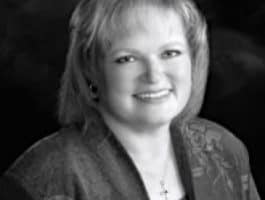
Preparing for Approaching Death
How will we know when the end is near? Today, author Deborah Howard, a hospice nurse, tells how to prepare for a loved one's approaching death.
Show Notes
About the Host
About the Guest
-
How will we know when the end is near? Today, author Deborah Howard, a hospice nurse, tells how to prepare for a loved one's approaching death.
-
Dave and Ann Wilson
Dave and Ann Wilson are hosts of FamilyLife Today®, FamilyLife’s nationally-syndicated radio program. Dave and Ann have been married for more than 38 years and have spent the last 33 teaching and mentoring couples and parents across the country. They have been featured speakers at FamilyLife’s Weekend to Remember® marriage getaway since 1993 and have also hosted their own marriage conferences across the country. Cofounders of Kensington Church—a national, multicampus church that hosts more than 14,000 visitors every weekend—the Wilsons are the creative force behind DVD teaching series Rock Your Marriage and The Survival Guide To Parenting, as well as authors of the recently released book Vertical Marriage (Zondervan, 2019). Dave is a graduate of the International School of Theology, where he received a Master of Divinity degree. A Ball State University Hall of Fame quarterback, Dave served the Detroit Lions as chaplain for 33 years. Ann attended the University of Kentucky. She has been active alongside Dave in ministry as a speaker, writer, small-group leader, and mentor to countless wives of professional athletes. The Wilsons live in the Detroit area. They have three grown sons, CJ, Austin, and Cody, three daughters-in-law, and a growing number of grandchildren.
-

Deborah Howard
Deborah Howard, RN, CHPN (Certified Hospice and Palliative Nurse), and her husband, Theron, live near Little Rock, Arkansas, where she divides her time between writing and working as a hospice nurse.
How will we know when the end is near?
Deborah: Charles Spurgeon, one of the 19th century's most brilliant preachers, said once, "Think not that heaven and earth are divided; they are but kindred worlds, two ships moored close to one another -- one short plank of death will enable you to step from one into the other." I think that's just such a gorgeous description of death; that it's one short plank that enables us to step from this earthly life into our eternal one.
Bob: This is FamilyLife Today for Thursday, February 24th. Our host is the president of FamilyLife, Dennis Rainey, and I'm Bob Lepine. We will renew our minds on the subject of death today as we look carefully at the last hours of life.
And welcome to FamilyLife Today, thanks for joining us on the Thursday edition. You've referred many times to that passage in Ecclesiastes -- where is it -- chapter 7 where it talks about it's good to visit the house of mourning?
Dennis: Right.
Bob: I think that's a passage that you look at, as a Christian -- I remember the first time I read it and thought, "What is he talking about -- it's good to visit the house of mourning? The end of the thing is better than the beginning."
Dennis: "And the living take it to heart.
Bob: I read that, and I scratched my head, and I said, "What is he talking about?"
Dennis: Well, it's like going to a funeral. When you go to a funeral, it's a time of reflection, it's a time of analysis, it's a time of remembering what's important. And when you consider someone's life and what it's been all about, there at the end, and you celebrate that life and comfort those who have been left behind, it really is good to go to the house of mourning. And all this week we have -- well, in a sense, gone to the house of mourning. We visited with a hospice nurse, a nurse with almost 10 years of experience of caring for the dying and those who are left behind. Deborah Howard joins us. Deborah, welcome back to FamilyLife Today.
Deborah: Thanks, Dennis.
Dennis: Deborah, you've written a book called "Sunsets - Reflections for Life's Final Journey," and it's good to call it a journey and, as we talked about, there are certain mile markers or things that you can expect to see as a person moves toward death. I know when my mom was in the process of dying I received some literature from hospice that really helped me understand what my mom was about to experience. What I want you to do is help us today to understand the process of dying and explain what happens to a body. How does it begin to go through the various stages of shutting down where, ultimately, the spark of life is taken out of it and is transported into eternity?
Bob: And let me ask, just as you begin that, it is different, depending on what disease is moving you toward death, right? It's going to be different for a cancer patient than it might be for somebody who's got chronic heart failure or whatever else, right?
Deborah: There are some specific differences determined by what their specific disease process is, but there are also similarities that occur regardless of the specific disease process that they're dying from.
Bob: So if a person is at a point today where he's just gotten a diagnosis that he is headed toward death – he feels fine; he can't tell any symptoms – what would be the first thing that would pop up that would be an indication to him and to those around him that, in fact, he is on the pathway that may be leading him to death?
Deborah: Well, I think that there's going to be eventually, and it's different for every person – there would be a time that he's going to start sensing a reduction in his stamina. He's not going to be able to keep going like he always has, and suddenly he stays home more than he goes out and suddenly he's tired a lot more. Eventually, he'll start spending more time sedentary than he is active. And depending on the disease process, there are other symptoms but I think for the sake of this I'll just deal with the things that happen to the body from a physiologic standpoint.
Bob: So the first thing is just a weakness, a weariness …
Deborah: Fatigue and malaise, and malaise is another word for "I just don't feel good."
Dennis: Will that person sleep more?
Deborah: Eventually. There are two things that we know happens in just about every case, and that is that they will start sleeping more and eating less. Depending on what your illness is, you'll find an increase in your pain and symptoms, which, hopefully, hospice will be on the scene and can intervene in those. As they get worse, then we have different medications that we prescribe to maintain their comfort. Eventually, the difference systems start shutting down. It's been my experience to find that the digestive system is usually the first system that shuts down. Your appetite is less, you don't want food, food is not attractive to you, and a lot of people don't know this, but you can actually live for over a month without a bite of food. What is more critical to you is the amount of fluids that you have, and we do try to encourage people to keep up their fluid intake.
But I want to make a very special point to say that in a healthy person, dehydration is something to avoid and can cause all kinds of problems and, for a healthy person, what we want to do is remedy that dehydration either by drinking fluids, replacing fluids that you've lost, or by inserting an IV and running fluids through you intravenously.
But for a patient who is dying, dehydration becomes their best friend. The death from dehydration is the most peaceful, comfortable death that I've ever seen. Patients who are dehydrated just become increasingly weaker, they are sleeping more, it becomes harder and harder to rouse them. But then they just drift away in their sleep. It's a very sweet way to exit this world.
On the other hand, a respiratory death stemming from, say, the inappropriate use of IV fluids, becomes sort of a traumatic, labored struggle, and it's hard not only on the patient, but it's also hard for the families to witness this type of death.
Dennis: Deborah, you've walked us through a progression toward death that the patient goes through that includes the loss of vitality, loss of appetite, more sleeping, maybe less fluid intake – at that point where does the progression lead us? What are some of those signs that the patient is now actively moving toward death?
Deborah: I'll just start with the head and work down – head to toe. One of the first things that I do, and I guess this is very unscientific, but I feel the temperature of the nose. I know it may sound odd, but people just – I haven't found people, in my experience, to die with a warm nose. So I touch their nose with the back of my fingers, because that's really more sensitive to temperature, and I see whether they've got a cold nose. Now, this is after I know for a fact that their nose is usually very warm. Once I see that their nose is cold – and I'm not talking cool, I'm talking ice cold, then I start looking for other things.
One thing that I see is a change in their level of consciousness. Perhaps they were able to say words or small phrases to me the last time I saw them but now they're not able to speak at all. Now maybe all they do is open their eyes when I shake them or when I call their name they might respond by raising their eyebrows, but their eyes stay shut. Now their responses are much less, so we call that a "decrease in their level of consciousness."
I also look at their breathing status. I listen to their breath sounds with a stethoscope, and I try to determine – is this different than what it was the last time I checked. And we try to keep track of that, of these differences. If the last time I check him his lungs were clear, and this time I check him, and his lungs are starting to have all kinds of extra sounds like fluid buildup or like wheezes or something like that, then I know this is a change, and it will affect the quality of his respirations. Sometimes they're put on supplemental oxygen because unlike artificial hydration and artificial nutrition, oxygen is considered a comfort measure and not a life-prolonging procedure. So we have oxygen usually for every patient, and they only use it when they need it or they use it continually if that is what is required for them but generally we will look at their body.
Their nailbeds become very dark if they're hypoxic or low on their oxygen level. It will become white first, and then that white will turn to kind of a blue-purple tinge. Sometimes this also will extend to their fingertips, maybe their whole hand, which leads to another symptom, and that is what we call "mottling." Mottling is a kind of a speckled appearance to the skin. For Caucasians it's sort of a purpling of the skin and splotchy. Like sometimes when you go into the frigid air, you can look down at your skin, and it's sort of mottled, it's sort of purple splotches, and that's because the circulation has really – your veins constrict in the cold air, and you have less oxygenating blood circulating through your extremities.
So we look for changes in their coloration. Usually that starts on the kneecaps, the bottoms of the feet, sometimes the feet, hands. If I look at a patient, and there is no mottling or discoloration at all, and then I go back an hour later, and they're splotchy and mottled to their knee, I know that that's a pretty quick progression in one hour's time. So I would probably hang around and see what else happens in the next hour. Usually, when people go into this actively dying phase, I usually monitor their condition and look them about every hour to see if there are any changes.
Bob: Actively dying can last for days?
Deborah: Usually not. Sometimes, yes, but usually when they're actively dying, it's just a matter of a day, maybe hours, sometimes minutes.
Bob: So when you see these kinds of symptoms, that's when you call the family and say, "Time to get here."
Deborah: Right. There are also the changes in the vital signs. When a patient starts going through the dying process, their blood pressure will start to drop. The body has several compensation systems, and one of the ways that the body compensates for this drop in blood pressure is it causes the heart and lungs to pick up the pace, and I just refer to it with my families as the "fast stage." Everything will be faster. Their breathing will be very quick and almost like panting sometimes.
Dennis: Shallow?
Deborah: Shallow and quick, and then the heart rate will increase sometimes to 120, 140 beats a minute, and, unfortunately, the heart will not beat like that indefinitely, but what that's doing is it's beating fast enough and hard enough to keep the blood pressure level up to a point that will sustain life. But eventually, when that heart starts failing, then you'll see the body start to slow down. The heart rate will slow, the respirations will slow, their temperature will start to drop, and when this occurs it's not enough to keep the blood pressure to a life-sustainable level, so the blood pressure starts to bottom out, and most of the time that's when they just kind of drift away.
Bob: Deborah, I've heard stories, interesting, that I've heard it with some degree of regularity about a dad, a mom, who will be dying. You've sat by the bedside, there has been no motion, there has been no conversation for hours, maybe days, and, all of a sudden, a person sits up and is lucid and is strong, and it's almost like it's their last moment of life before death. Is that something that happens infrequently, something that happens with some degree of regularity, or is that just flat-out unusual?
Deborah: Well, it's common for a patient to get better before they get worse. I liken it to a pregnant woman who has what we call a "nesting" instinct right before she gives birth. Right before she goes into labor, she has an unusual spurt of energy sometimes. That's when they get all the last-minute stuff ready.
Bob: Mary Ann cut the grass the day before Amy was born, so I know what you're talking about.
Deborah: Exactly. Well, a lot of times a person who is dying will what I call – they will "rally," and, all of a sudden, they will show glimmers of their old self, and I always caution people that if this happens, enjoy every moment of it because it will only be temporary, and I let them know this, not so that I can dash their hopes but so that I can make them cherish each moment that they are able to communicate with their loved one, each moment that they are able to see their loved one smile, because they know that it's just fleeting. And then I always caution them because, once this is over, a lot of times that's when the really rapid decline takes place.
Bob: Right, it may be minutes at that point.
Deborah: It usually is hours, but – or days.
Dennis: Deborah, you've walked us up to the point where the person is actively dying, and the heart is beginning to shut down.
Deborah: Right, it loses its effectiveness.
Dennis: Right. The body is becoming cold in its extremities and, at that point, what happens as the breathing slows and the heart slows down – at what point do you declare someone dead?
Deborah: There are a couple of different breathing patterns that we usually expect the patient to go into as they're approaching this time. We start looking very closely at the breathing patterns, and we teach the families what to look for as well. The last breathing pattern is called "agonal" breathing. Not because they're in agony, but just because that's the name applied to it, and it looks a little bit like a fish breathing out of water. The mouth is opening and closing, but you can tell there is no air moving in and out. There is no movement of air. Their body is going through the motion of breathing, but it is totally inadequate as far as pulling air in and pushing it back out.
This can go on for a minute or two before – or sometimes a little bit longer than that – before the patient stops breathing, but we find a general slowing of the breathing, and then it goes into this agonal breathing where they're going through the motions but they're totally ineffective. And then finally the patient stops breathing.
Now, anybody who has watched a patient die knows that, about the time you think they're not going to take another breath, they may take a breath. It might be 30 seconds later or 40 seconds later from the time that you think you've seen their last breath but eventually what I do when I'm on the scene is I count from the time of the last breath. If I do a 60-second count, and they haven't taken another breath, then I take my stethoscope, and I listen for sounds of any heart activity – cardiac activity. And if I hear no heartbeat at all, and there still has not been a breath, then I will declare time of death to be whatever time that is. And that's the time that will go on the death certificate.
There are only three segments of the population who can legally pronounce death – a physician can pronounce death, a coroner or his deputies can pronounce death, or a hospice RN can pronounce death. And so we actually do sign the death certificates and actually make a report to the coroner about the cause of death and that sort of thing.
Bob: Having watched people go through all these stages over and over again, this has been your job for nearly a decade – what's it done to your faith?
Deborah: It's done nothing but strengthen it actually, because I see how fragile life is, and we're told in the Scriptures that life is like a breath, like a vapor, and that's what it is, really. Charles Spurgeon, one of the 19th century's most brilliant preachers, said once, "Think not that heaven and earth are divided; they are but kindred worlds, two ships moored close to one another – one short plank of death will enable you to step from one into the other." I think that's just such a gorgeous description of death; that it's one short plank that enables us to step from this earthly life into our eternal one.
Dennis: I think what's become clear, as we've talked about this subject, is that we, as earthly tethered human beings who tend to look at life through the world's perspective, don't really have a biblical view of death. We're grossly under-educated when it comes to this ultimate door we must all walk through, and, Deborah, I just appreciate you being with us here, talking about this subject, and I really appreciate your book. Frankly, I wish I'd had this book as I went through my mom's illness and her subsequent death. Your book, "Sunsets – Reflections for Life's Final Journey," has really been a great help in providing a biblical perspective but also one that's tied to real life because of your experience over the past decade in dealing with death and dying. Thanks for being with us.
Deborah: Well, thank you for having me here. It's a great honor.
Bob: I think in the months ahead, we're going to find plenty of people that we're going to be passing this book along to – folks who hear the news about a loved one, maybe about themselves. This is a book to put in the hands of families who are about to head down the path, because it is going to give them a biblical perspective and a medical perspective on where they're headed, and it will help make the time on the path a richer time.
Dennis: We all need hope as we travel down this path, and we can pass that hope on to our loved one or to our family members if we really have a biblical perspective of what's going on here, as well as the medical perspective that Deborah has helped us with this week.
Bob: We've got copies of the book available in our FamilyLife Resource Center. You can go to our website at FamilyLife.com and down at the bottom of the screen there's a button that says "Go." You just click on that button, it will take you right to the page where you'll get more information about Deborah's book, or you can order online from that page, if you'd like. Again, our website is FamilyLife.com. You can also call 1-800-FLTODAY for more information on how to get a copy of the book sent to you.
Deborah: One of the goals in writing this book was exactly for the reason that you stated – that it would be able to help a greater number of people than I can ever reach on a personal level. There have been families who have said that bringing spiritual matters to their mind and helping them through these physical parts of the dying process have been so beneficial to them, and I just wanted to make this available to as many people as I can reach, and I figured the best way to do that is through the written word.
Bob: This is one of those times when people are spiritually open. You stop and think about it – the birth of a child is a time when people are thinking about spiritual things, and when a family member, a loved one, is facing death, certainly that person is thinking about spiritual things and about what is beyond this life. But I think all of us are thinking about that at some level, and your book can be an opportunity to present the Gospel to someone who has either gone through this himself or who has a family member who is facing death.
Again, we've got the book in our FamilyLife Resource Center. Go to FamilyLife.com and request a copy. It's called "Sunsets – Reflections for Life's Final Journey," or call 1-800-F-as-in-family, L-as-in-life, and then the word TODAY.
We got a real nice note recently from one of our Legacy Partners who lives all the way up in Maine. She sent along a note that says, "Thanks so much for the resources you share with your Legacy Partners." She was talking about the fact that those folks who help support us on a monthly basis have an opportunity to get some books or some CDs or some things that we make available to Legacy Partners as a way of saying thank you for the financial support that you folks help provide for this ministry. She said, "I feel as if you're helping me and my family more than my small gift could certainly be helping you. You inspire me to become all that God wants me to be."
Well, that's our motivation here at FamilyLife for all that we do. We want to effectively develop godly families who change the world one home at a time, and we do it in partnership with folks just like you who do help with the financial needs of this ministry, and we're thrilled to be able to provide, as we can, those kinds of practical tools to strengthen your marriage and your family. Of course, we like to think this daily radio program is one of those tools, and it's available to everybody every day thanks to the financial support that comes from Legacy Partners.
If you'd like to find out more about becoming a Legacy Partner yourself, you can find information on our website at FamilyLife.com or give us a call at 1-800-FLTODAY and let someone on the team let you know how you can join with us in the ministry of FamilyLife Today. Again, our toll-free number – 1-800-FLTODAY. Let us hear from you and thanks in advance for considering becoming a FamilyLife Today Legacy Partner.
Well, tomorrow we are going to spend some time talking about what families need to do to make sure they are anchored in bedrock. And I hope our listeners can be back with us for that.
I want to thank our engineer today, Keith Lynch, and our entire broadcast production team. On behalf of our host, Dennis Rainey, I'm Bob Lepine. We'll see you back tomorrow for another edition of FamilyLife Today.
FamilyLife Today is a production of FamilyLife of Little Rock, Arkansas, a ministry of Campus Crusade for Christ.
_______________________________________________________________
We are so happy to provide these transcripts to you. However, there is a cost to transcribe, create, and produce them for our website. If you’ve benefited from the broadcast transcripts, would you consider donating today to help defray the costs?
Copyright © FamilyLife. All rights reserved.





